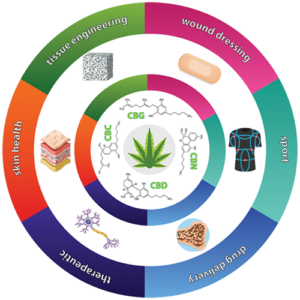Table of Contents
- The Importance of Cybersecurity
- Common Cyber Threats to Be Aware Of
- Creating Strong Passwords
- The Role of Regular Updates
- Implementing Multi-Factor Authentication (MFA)
- Tips for Safe Web Browsing
- Employee Training and Awareness
- Regular Backups and Data Recovery
The Importance of Cybersecurity
In an increasingly connected world, cybersecurity has never been more critical. With the rise of remote work and cloud computing, protecting personal and business data from cyber threats is paramount to avoid costly breaches and data loss. Cybersecurity measures help safeguard sensitive information from falling into the wrong hands. Implementing cybersecurity compliance services that align with industry best practices can fortify defenses and ensure ongoing vigilance. Organizations must remain proactive about cybersecurity to maintain the trust of their customers and stakeholders.
Common Cyber Threats to Be Aware Of
Understanding cyber threats such as phishing, malware and ransomware is crucial for identifying potential risks and implementing preventive measures. Phishing attempts sometimes take the shape of phony emails masquerading as reliable companies to trick recipients into divulging personal information such as bank account numbers or passwords. Malware, a shortened form of “malicious software,” is designed to infect devices and steal or corrupt data, often without the user’s knowledge. Ransomware, on the other hand, encrypts files and demands payment for their release, causing significant disruptions to individuals and organizations. A report by Forbes emphasizes the increasing frequency and sophistication of ransomware attacks, highlighting the substantial threats they pose. To mitigate these evolving dangers, raising awareness and providing education are crucial to bolstering defenses against cyber threats.
Creating Strong Passwords
Making solid and one-of-a-kind passwords for every account is one of the easiest yet most effective cybersecurity strategies. A strong password is tough for hackers to figure out and consists of capital, lowercase, numerals, and special characters. It’s important to avoid using easily guessed information, such as names, birthdates, or common words. One way to make a complex and unique password is to utilize passphrases, which are longer word or phrase combinations that are easy for you to remember but hard for others to figure out. Think about using a reliable password manager to keep track of all your complicated passwords safely. It’s also vital to regularly update your passwords and avoid reusing them across multiple accounts, as this can further strengthen security and prevent unauthorized access to sensitive data.
The Role of Regular Updates
Updating systems and software regularly is essential for robust cybersecurity. Software that is regularly updated can avoid attacks. Many cybersecurity breaches occur due to outdated software that attackers can easily exploit. Updates for systems, devices, and apps may help organizations greatly lower the chance that they will be the target of cyberattacks. By automating the update process, you can ensure that the most recent security patches are implemented as soon as possible, reducing the time hackers take to exploit potential system vulnerabilities.
Implementing Multi-Factor Authentication (MFA)
Before allowing access to a system or account, a security measure called multifactor authentication (MFA) requires the user to submit several forms of proof. In addition to the traditional password, MFA may need a unique code sent to the user’s mobile device, a fingerprint scan, or another form of biometric authentication. Research, including that done by CNBC, has demonstrated that multi-factor authentication (MFA) is a very effective way to lower the risk of unauthorized access, increasing the difficulty for attackers to infiltrate accounts.
Adding MFA to all critical accounts and systems can strengthen security procedures and secure sensitive data with additional protection. MFA improves the organization’s overall security posture by demanding several verification ways, which helps reduce the chance of unwanted access and unlawful data breaches.
Tips for Safe Web Browsing
Developing safe browsing habits is essential for protecting yourself from various cyber threats. One vital practice is to avoid clicking on suspicious links and websites, as they may contain malware or phishing attempts. It’s essential to ensure that the websites you visit use secure connections by looking for the “HTTPS” at the beginning of the URL. Use caution while downloading files from unreliable sources to stop malware from infecting your devices.
You must never enter credit card numbers or passwords on unsafe websites. Educating yourself on recognizing safe websites and avoiding online scams is imperative for maintaining personal and organizational security. By being watchful and keeping up to date on frequent online risks, you may reduce your chance of being a victim of malicious activity.
In addition to practicing safe browsing, browser extensions and security tools can add extra layers of protection. These tools can warn you about potentially harmful websites and help you make more informed decisions about the safety of the sites you visit. You may reduce the danger of cyber attacks and improve your internet security by proactively implementing these tactics.
Employee Training and Awareness
Regular cybersecurity training sessions are essential for businesses to ensure employees understand their crucial role in maintaining the organization’s security. These sessions can include awareness campaigns highlighting the latest cybersecurity threats and providing best practices to help employees avoid falling victim to such threats. Cultivating a well-informed workforce is essential, as it forms a vital component of an organization’s cybersecurity strategy.
In addition to traditional training methods, organizations can benefit from conducting simulated phishing attacks and implementing interactive training modules. These measures can significantly improve employee readiness and response to real-world cybersecurity threats, ultimately helping to cultivate a security-aware culture inside the company.
Regular Backups and Data Recovery
Regularly scheduled data backups ensure your information can be recovered in a cyberattack. Backup solutions can facilitate quickly restoring lost data, minimizing downtime and operational disruptions. This proactive practice is paramount for sustaining business continuity and bolstering resilience in the face of cyber threats. By incorporating a robust data backup strategy encompassing offsite and cloud backups, you can establish additional layers of protection, ensuring that critical data remains accessible even if a cyber incident occurs.

Asad Arshad, a prolific author of over 50+ websites across various niches, is open to collaboration opportunities. 🌐 For guest posts, reach out to him to benefit from his vast expertise and connect with a diverse audience. 📬




